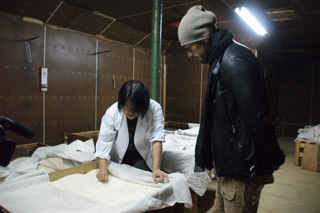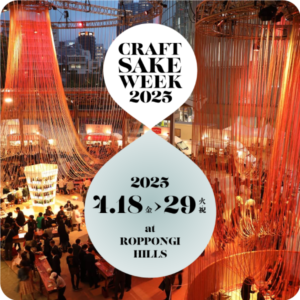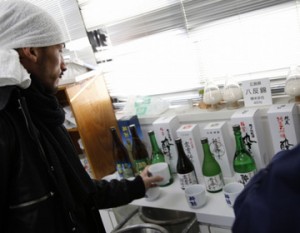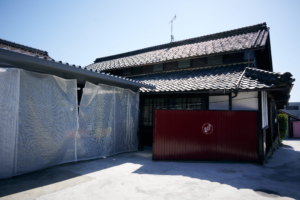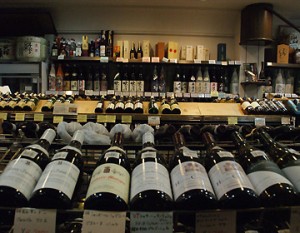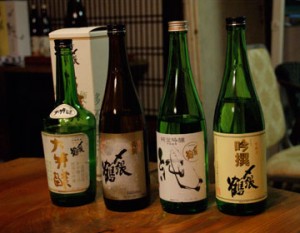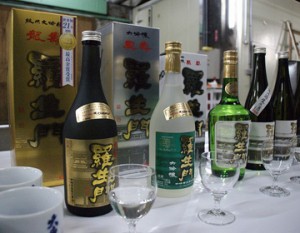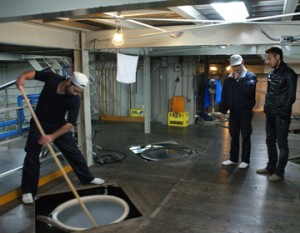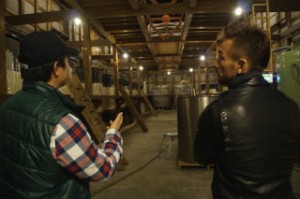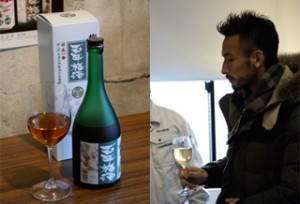“Sake” brewed by a small staff
Sarada, Ikeda-cho, Miyoshi-shi….? Sarada was written in katakana, which reminded me of ”salad”. It seemed to be a strange name for location. Could it be correct? This is the address of ”Miyoshikiku” which we visited. It was explained to us that ”Sarada” was the name of a small section in the town and formerly written in ”kanji” (Chinese characters). Nowadays, while the names of many small sections of towns are written in katakana, many cities no longer display those names on a map, so it is interesting to see the names that have been retained in Ikeda-cho. We visited Miyoshikiku which is a small sake brewery operated by only four people.
The 5th generation master, Ryoichiro Mamiya abolished the traditional ”toji” (master brewer) system, and has chosen to be involved in brewing his own ”sake”. The world of ”sake” breweries used to be quite exclusive, but he has tried to make ”sake” and the process of ”sake” brewing more familiar to people by showing how he brews sake.
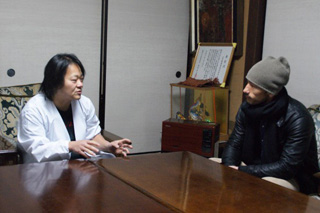
Retaining the culture of Japanese “bushi”
The ancestor of the Mamiya family was a ”samurai” from Ako. He entered Awa with Hideyoshi’s right-hand man, Hachisuka Koroku. The old ”samurai” residence and its 300-year old gate still remain to this day, conveying the atmosphere of that time. The ”sake” brewery was founded in 1903, and we were told they had many difficulties because they followed the practices of warriors, and not were not accustomed to commercial activities.
They overcame a lot of adversity, and the brewery is now operated by the 5th generation. In 2007, this brewery won the highest award in the ”Junmaishu Battle” where 100 brands of ”sake” from throughout Japan are tasted and evaluated by an organization of ”sake” enthusiasts. The ”sake” brewery has attained quite a reputation despite its small size.

Brewing with local spring water
As soon as the cap is opened, Miyoshikiku ”sake” has a robust fruity aroma, and its characteristics exist in the very mild taste which is not sweet at all. This ”sake” is like white wine. Its secret lies in the water used for brewing. Miyoshikiku uses spring water from the Matsuo River in the rocky area of Iya, a relatively unexplored region. Locally, the water is known for its superb quality. It is commonly said that hard water is good for ”sake” brewing, but the water is extra soft.
Miyoshikiku takes advantage of the features of the water, and succeeded in creating a ”sake” that has the ”umami” of the water and rice. This is the reason for the finished product which sets it apart from standard ”tanrei karakuchi sake”. When you drink it, you will be surprised at the robust fruity taste. We recommend you try for yourself.
